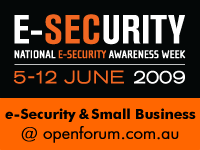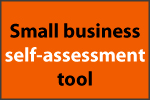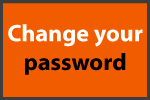Strong Authentication has Multiple Lines of Defence

More and more, customers are demanding better e-Security.
A consumer survey conducted by Synovate revealed that nearly nine out of 10 consumers prefer to visit websites that take steps to actively engage them in protecting their online identity. It is certainly encouraging to see a growing preference among Internet users to seek out sites that take steps to protect them from identity thieves.
 The study also found that: 68 percent of consumers surveyed want better protection from fraudsters; 41 percent say they’d consider using new applications to safeguard their identities, even if it requires an extra step on their part; 85 percent say trusting a site is most important when sharing personal and financial information with that site.
The study also found that: 68 percent of consumers surveyed want better protection from fraudsters; 41 percent say they’d consider using new applications to safeguard their identities, even if it requires an extra step on their part; 85 percent say trusting a site is most important when sharing personal and financial information with that site.
There’s good reason for consumers and businesses to make an effort to ensure a secure online experience. In the United States last year, data breaches cost an average of $202 for every compromised record, a 2.5 percent jump from the year before, according to a recent Ponemon study. Average costs to companies reporting breaches totaled more than $6.6 million per breach, with some reaching $32 million. Australian businesses face the same sorts of challenges.
 Today’s economy is putting pressure on consumers’ wallets and forcing businesses to cut corners in order to cut costs. Yet, it’s the convenience and savings available online that make Internet shopping so attractive to consumers. That’s why online businesses and their customers should do whatever they can to ensure that every transaction is protected.
Today’s economy is putting pressure on consumers’ wallets and forcing businesses to cut corners in order to cut costs. Yet, it’s the convenience and savings available online that make Internet shopping so attractive to consumers. That’s why online businesses and their customers should do whatever they can to ensure that every transaction is protected.
 One such safeguard is strong authentication, which adds another layer of protection beyond standard user name and password logins.
One such safeguard is strong authentication, which adds another layer of protection beyond standard user name and password logins.
 With strong authentication, consumers use a one-time password generator-either a small hardware device such as a token, or a one-time password generator that can be downloaded to their mobile phone. These devices generate a new six-digit security code for every transaction and are entered in after the usual user name and password.
With strong authentication, consumers use a one-time password generator-either a small hardware device such as a token, or a one-time password generator that can be downloaded to their mobile phone. These devices generate a new six-digit security code for every transaction and are entered in after the usual user name and password.
 Web sites that support strong authentication-including eBay, PayPal, AOL and various others-recognise the one-time password. This technique is effective because it combines something the user knows (their user name and password) with something they have (the one-time password from the strong authentication device). Identity thieves aren’t likely to have both-and that’s the power of strong authentication.
Web sites that support strong authentication-including eBay, PayPal, AOL and various others-recognise the one-time password. This technique is effective because it combines something the user knows (their user name and password) with something they have (the one-time password from the strong authentication device). Identity thieves aren’t likely to have both-and that’s the power of strong authentication.
Fran Rosch, Senior Vice President of Authentication Products, VeriSign. For more information on how consumers and businesses can protect themselves online, visit https://idprotect.verisign.com
____________________________________
Fran Rosch is a guest blogger of our "e-Secuity & Small Business" forum which is part of the National e-Security Awareness Week, an annual initiative aiming to raise awareness about the importance of e-security among Australians.
To learn more, visit http://www.staysmartonline.gov.au/ today.
To find out about how to protect your business and your customers and stay safe when working from home, go to http://www.staysmartonline.gov.au/small-business-security, or sign up for the following free services:
__________________________________________













